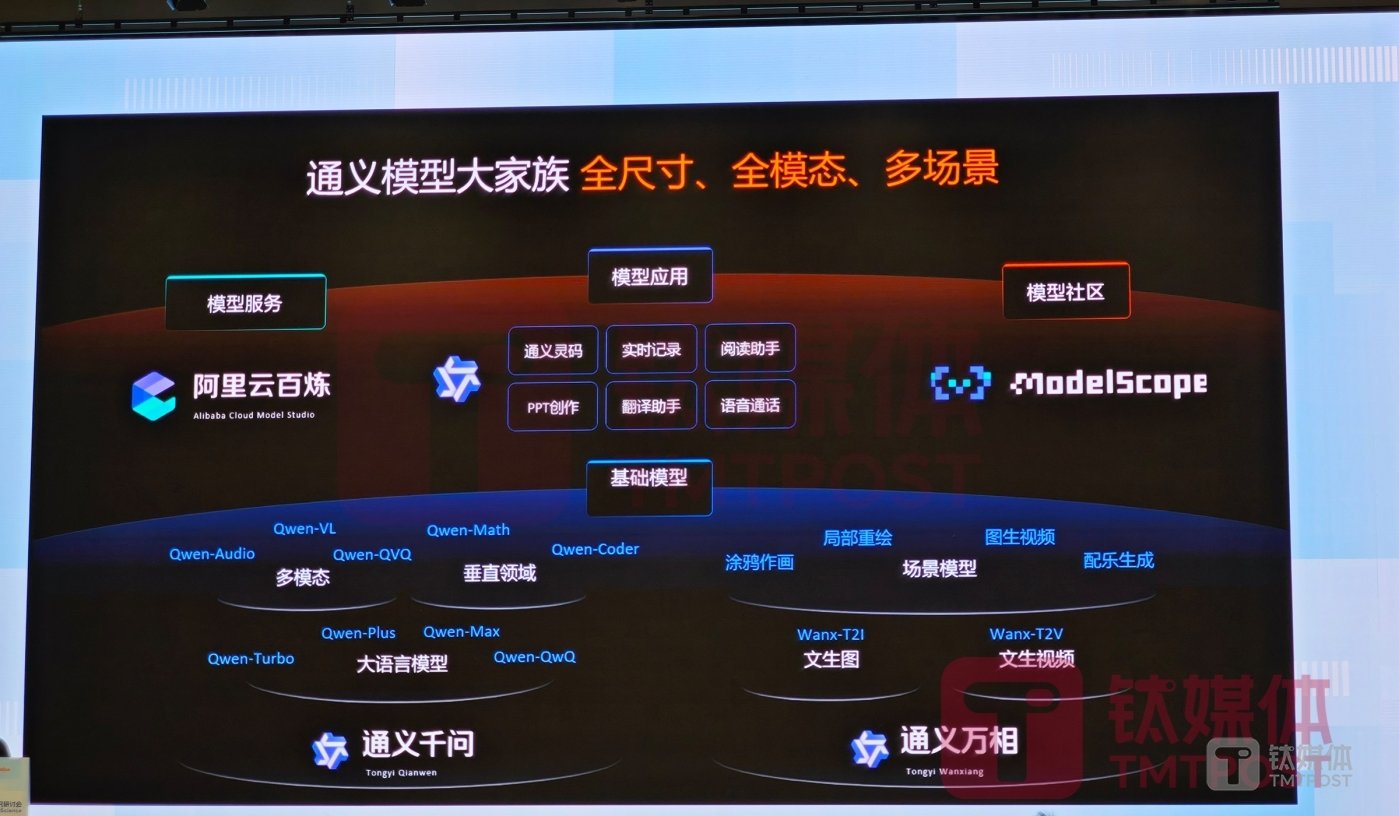
(Photo source: unsplash)
“The DeepSeek craze has a promoting effect on the AI industry. Before the Spring Festival, I contacted a top scientist and I wanted to recommend him to use the Tongyi Model. At that time, he said it would not be of great use to us, but after the Spring Festival, he immediately contacted me and said he would come and cooperate with us in depth because he saw The AI Model has great potential in the direction of scientific research. rdquo;
At the World Internet Conference AI For Science seminar held on February 19AlibabaYe Jieping, vice president of the group and head of the big data and intelligence laboratory, said thatCompared with 20 years ago, 10 years ago, or even 5 years ago, the AI model can now play a very great value in the entire scientific research process.
In fact,At the beginning of 2025, AI is accelerating its takeover of the digital world and changing the physical world, profoundly affecting the new round of industrial innovation capabilities and competitive landscape. At the same time, with three computer scientists winning the 2024 Nobel Prize, AI4S (Scientific Intelligence) has gradually become a basic scientific research method, using AI technology to break down barriers in various disciplines, solve complex scientific research problems, and let AI play an important role in a series of scientific research fields such as chip design, biomedicine, materials and energy, astronomy and meteorology, and autonomous driving.
in 2024NvidiaAt the GTC conference, Jensen Huang, founder and CEO of Nvidia, the world’s largest technology giant, firmly believed that AI4S is one of the three key directions in the AI field.
So, with the influence of the new round of DeepSeek craze, how can generative AI technology accelerate the process of scientific research?
At the meeting on the 19th, Wang Jian, chief chairman of the Artificial Intelligence Professional Committee of the World Internet Conference, academician of the China Academy of Engineering, and director of the Zhijiang Laboratory, said that the first and second paradigms of scientific research have been widely verified in scientific research, and the third paradigm has never been verified in the field of scientific research. Although the impact is extensive, the impact on various disciplines is not deep enough;the fourth paradigmDriven by data but never formed in scientific research, there is no consensus on the fifth paradigm. Generative AI does not belong to any traditional scientific research paradigm.
The so-called four paradigms for scientific research were proposed by Turing Award winner Jim Gray in 2007. He believes that the development of human science is divided into four paradigms: the first paradigm is experimental science that records and describes natural phenomena; the second paradigm is theoretical science that uses models to summarize and summarize phenomena; the third paradigm is computational science brought by scientific computers; and with the advent of the era of big data, scientific research relies on big data analysis, the fourth paradigm.
“I think it’s still time for people to see benevolence and wise people to see wisdom.” rdquo; Wang insisted.
In this 30-minute speech, Wang Jian pointed out that the public’s scientific research is still at the traditional stage and there is a phenomenon of solidification. Today, the essence of generative AI is the combination of data, models, and computing based on the Internet. The Internet has become an integral part of us, so the future of AI4S should be open science.
He believes that openness in the traditional software era only means the openness of software source code. In the AI big model era, model weights, data sets, methodology, and source code are all resources. Therefore, he believes that open source in the big model era is actually Open resource, which refers to the openness of all scientific research resources.
Wang Jian further said that although AI is far from the moment to truly solve scientific problems, AI can break down barriers in various disciplines and has the potential to subvert Basic scientific research. ldquo; AI is not a tool revolution, but a tool for a scientific revolution.” rdquo;
“In fact, this era is changing. I believe that in the end, it is everyone’s creation that determines whether he can produce the best scientific research results, rather than simply having some scientific research resources that others cannot have, but being able to produce better results. If we can make good use of this (AI For Science) technology so that humans can open up real scientific and technological innovation resources, this is also its significance and value. rdquo; Wang Jian said at the end of his speech.
At the same event, many experts pointed out that AI ultimately needs to be used as a tool to enhance the research capabilities of human scientists, rather than replacing humans in carrying out research work, so human scientists should master the ability to use AI. In addition, to strengthen international cooperation in the field of AI4S, especially in jointly solving issues such as transparency and interpretability of models, international collaborative cooperation is particularly necessary.
“Now, all scientific research fields should be tested with AI. Sun Maosong, a professor at Tsinghua University and executive vice president of the Institute of Artificial Intelligence, said that AI can discover the most important and root causes in a certain field. If there is high-quality data in these fields, then AI can give answers with a high probability.
Sun Weijie, founder and CEO of Shenshi Technology, said that in the era of AI4S, AI can help everyone better process literature data, help us organize knowledge, and greatly improve the efficiency of calculation and simulation accuracy and improve laboratory efficiency. Therefore, based on the changes in the engineering system brought about by AI4S, there is no doubt that scientific research and teaching in schools will undergo great changes. In the future, AI4S will change the relationship between scientific research and production, thus moving towards the next AI4S era.
Ye Jieping pointed out in his speech that Alibaba Cloud has given full play to its “cloud +AI” technological advantages and is at the forefront of the country in the field of AI4S. It has currently served the National Astronomical Observatory of the Chinese Academy of Sciences, FAST Telescope Data on Cloud, RNA virus discovery at Sun Yat-sen University, and Fudan University Scientific Research Intelligent Computing Platform. Many other major scientific research projects.
Looking to the future, Ye Jieping emphasized that it is expected that if the capabilities of AI models continue to improve, the way scientists do scientific research will undergo profound changes, and Alibaba Cloud will continue to promote the world’s leading large models and AI4S systems.

As the leading AI and cloud service provider for 80% of the country’s technology companies and more than half of the AI big model companies, Alibaba Cloud not only continues to iterate on the Tongyi series of big models, but also the price of Tongyi Thousand Questions API calls has dropped by 97% in one year. At the same time, developers around the world have developed more than 90,000 derivative models based on Alibaba Self-Research Tongyi Open Source Model, and the cumulative number of model downloads exceeds 200 million times.



